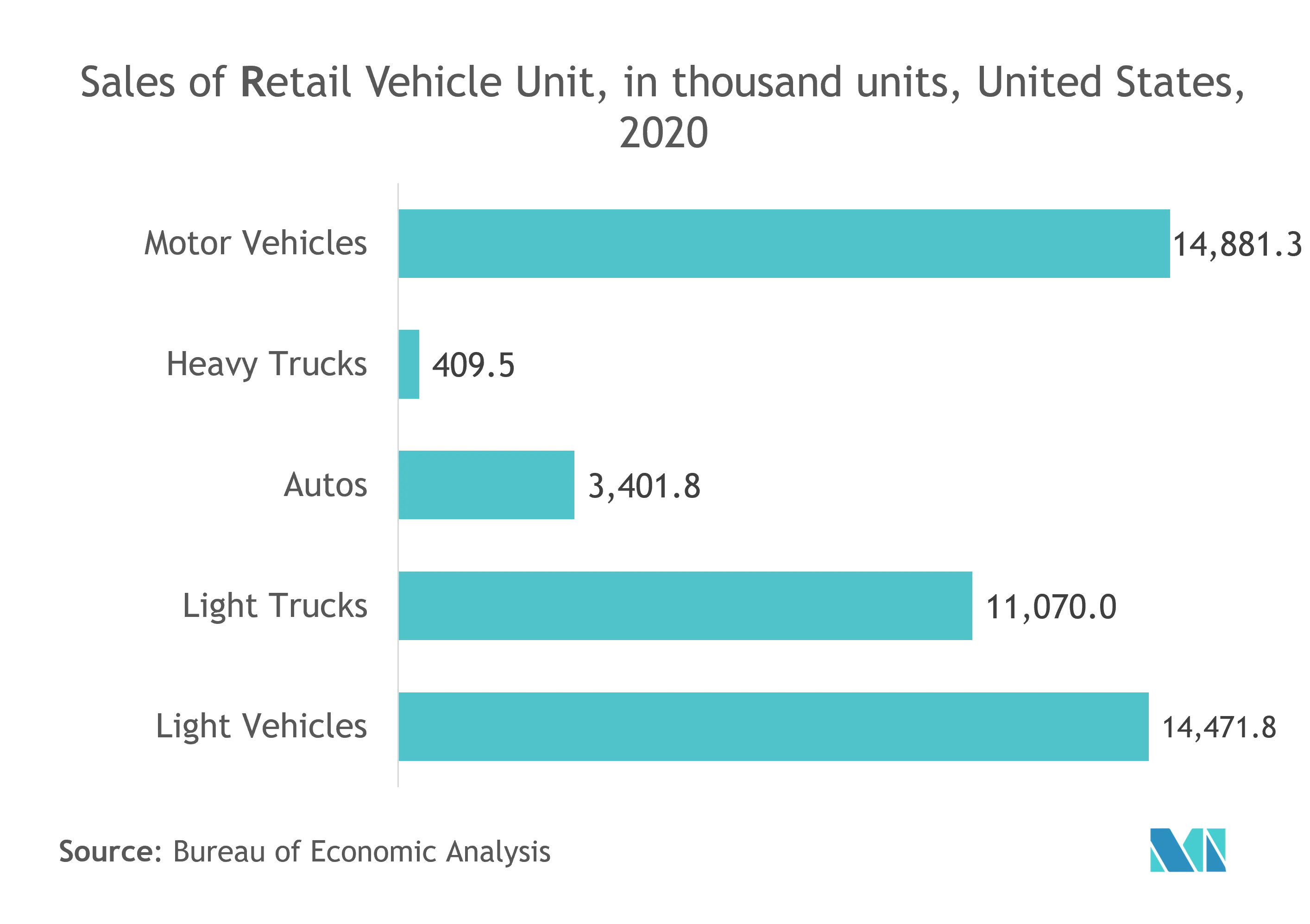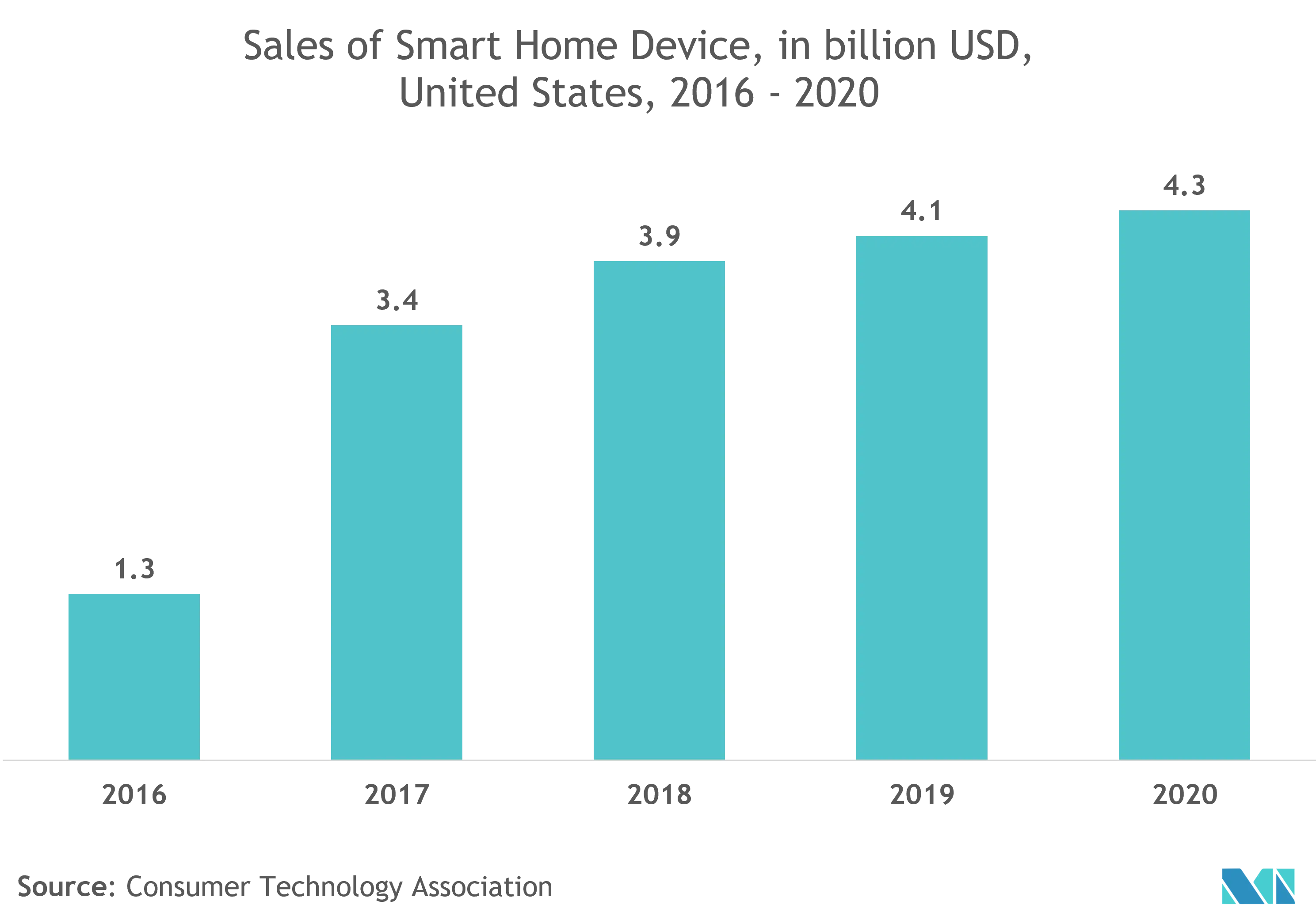Market Trends of North America Wireless Sensors Industry
This section covers the major market trends shaping the North America Wireless Sensors Market according to our research experts:
Automotive is Expected to Hold Significant Market Share
- Automotive vehicles have undergone various changes over the last few decades. Previously, cars used to work with basic electrical systems that offered power for headlights and spark plugs. As technology progressed, cars were fitted with the latest gadgets, such as radios, alarms, and wipers. Various technological advancements have also been made for vehicles’ safety, such as airbag deployment. The increase in these sensor-dependent features has driven engineers to develop more accurate sensors with automotive applications in mind.
- Currently, the two significant trends for the automotive sector are electrification and automation. The emergence of electric vehicles in the industry has dramatically impacted the demand for wireless sensors in the long term. More electric cars mean an increase in demand for sensors, a surge in sensors for used battery monitoring, and various positioning and detection of moving parts of automobiles.
- Moreover, with the increasing use of electric vehicles, technology pioneers like Qualcomm have developed efficient wireless charging technology for cars. This wireless charging technology offers convenience for users to charge their vehicles at wireless charging stations, parking lots, or at home efficiently. The company has also achieved transfer efficiency of more than 90% with a single primary base pad. The company believes that the technology can be further improved for better efficiency and more straightforward implementation in the future.
- As the use cases of sensors continue to increase in automobile applications to support ADAS, infotainment, and autonomous driving systems, the need for interface specifications is apparent. It is expected to be critical for future demand.
- As ADAS applications evolve and become more complex, there has been an increased need for effective methods to present safety alerts and other relevant information to the driver. Head-up displays (HUDs) are among the few emerging solutions for consolidating ADAS data into a centralized screen that allows the driver to keep the eyes on the road while viewing alerts and warnings that appear on the windshield time.

United States Accounts for the Largest Market Share
- The growth of the wireless sensors market is driven by the application in the various end-user industries. Manufacturers invest in R&D activities to improve the accuracy and reliability of wireless sensors. Wireless sensors are used for data monitoring and other similar functions and in building automation, military and defense, and other industries, like food and beverage and material handling.
- The key drivers influencing the wireless sensors market are the increasing need for new renewable energy development, energy sources, and other rapid technological advancements in the United States. They are also a vital component in smart grids for remote monitoring of transformers and power lines where they are put into service to monitor line temperature and weather conditions.
- Moreover, critical wireless sensor vendors in the United States adopt product innovation strategies to cater to advanced offerings across the industries. For instance, in Feb 2020, Kryton International Inc., a company known for innovative and valuable concrete technologies, launched its new Maturix smart concrete sensors. The Maturix smart concrete sensor is the first truly wireless concrete monitoring sensor in the region.
- The United States also has the highest adoption of automation and smart devices in almost every industry. Owing to a high rate of industrialization, the country is a dominant market for smart homes and smart offices. The area has also witnessed the most increased adoption of wireless sensors for various industry verticals compared to the world.
- Further, with changing dynamics in the industry, automotive manufacturers are moving toward electric vehicles production to meet the needs of advanced consumers. The use of electric vehicles in the United States has risen rapidly, significantly augmenting the demand for wireless sensors designed for automotive applications.


